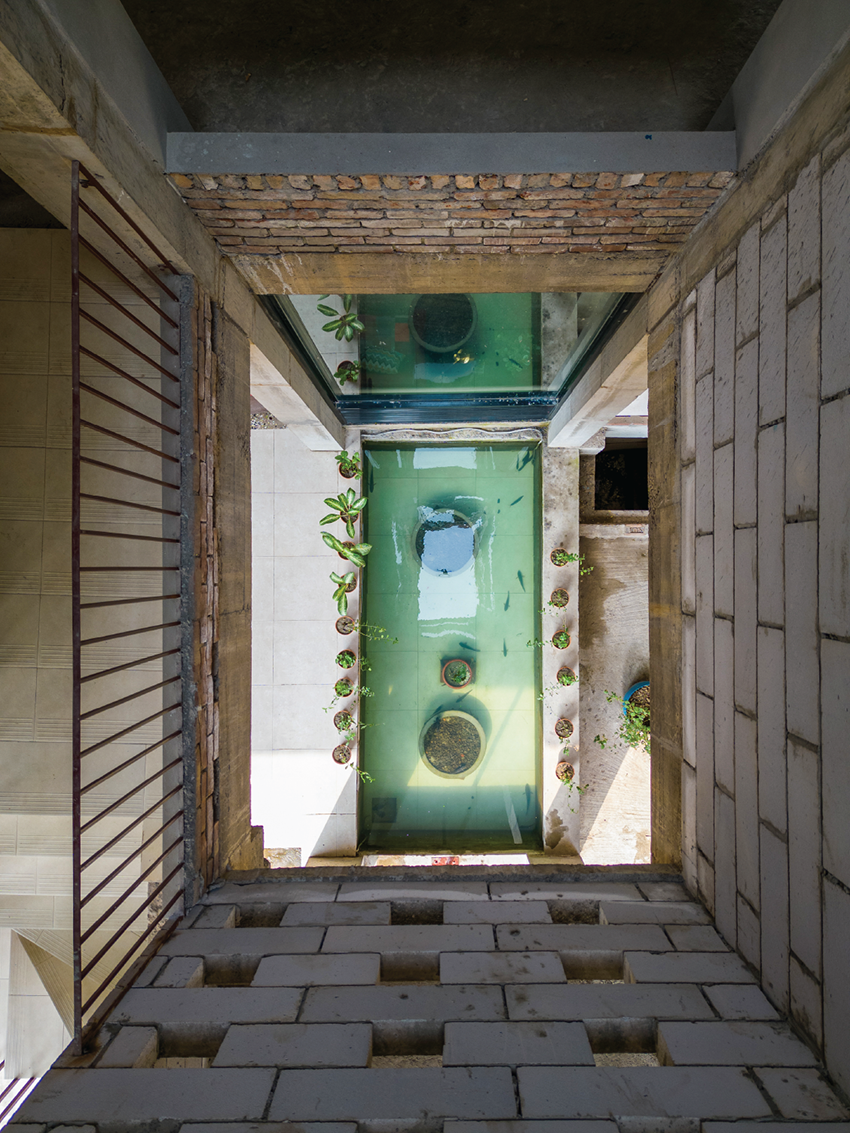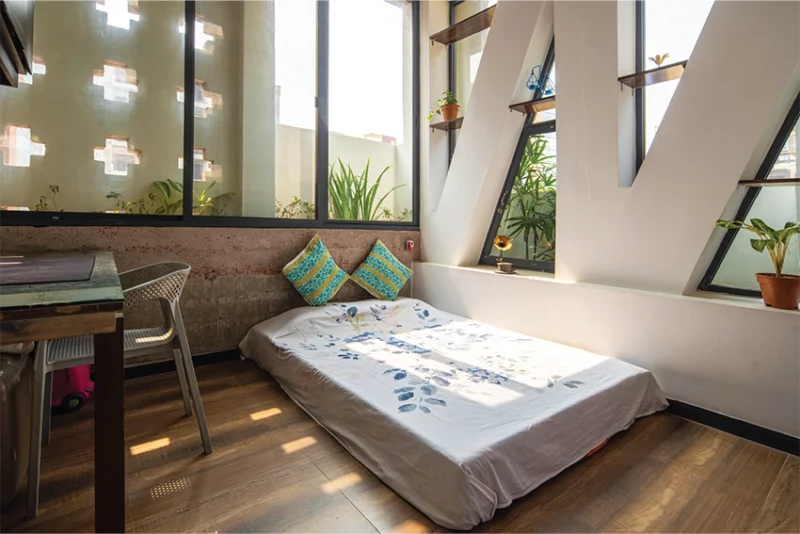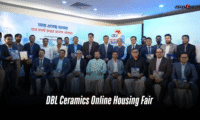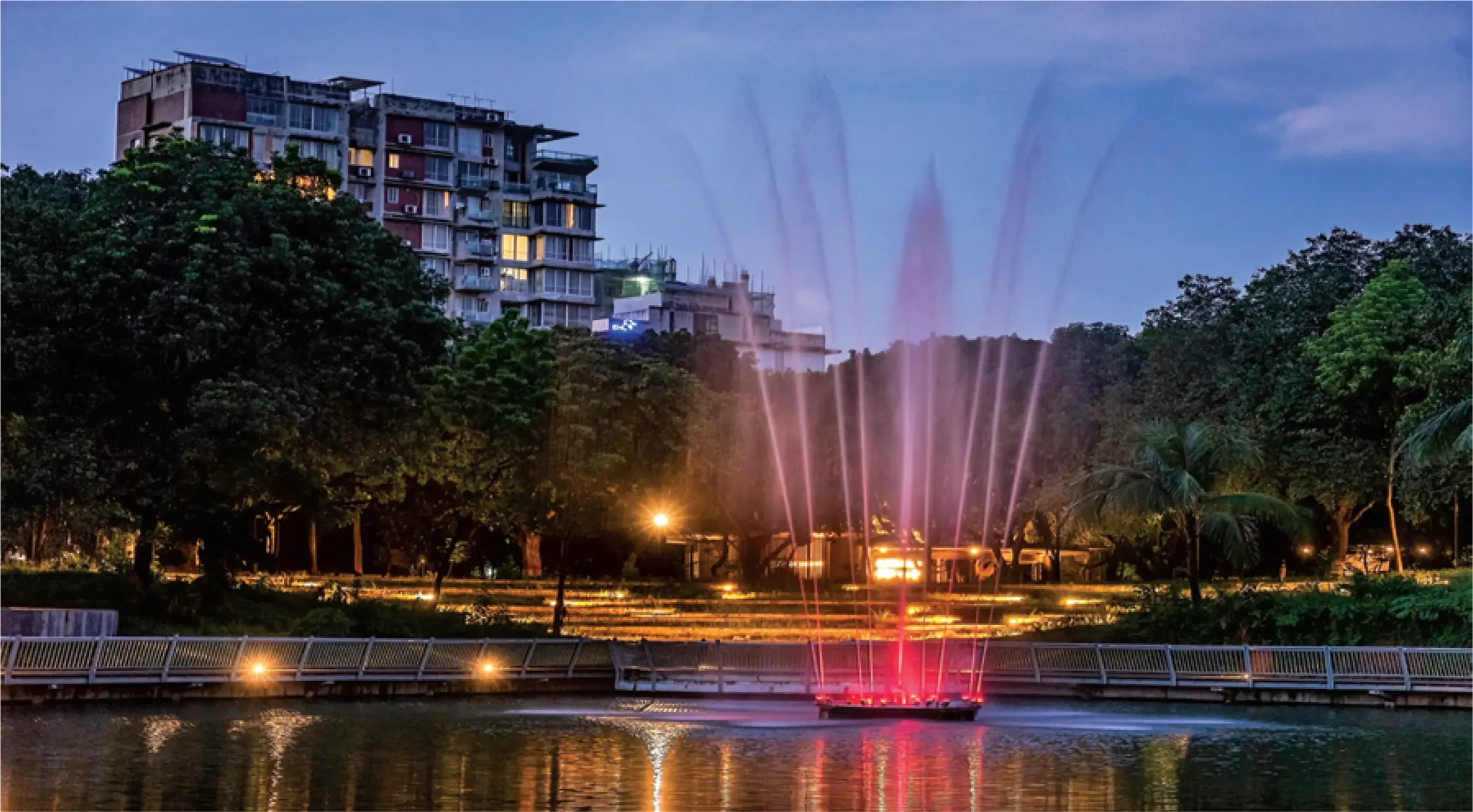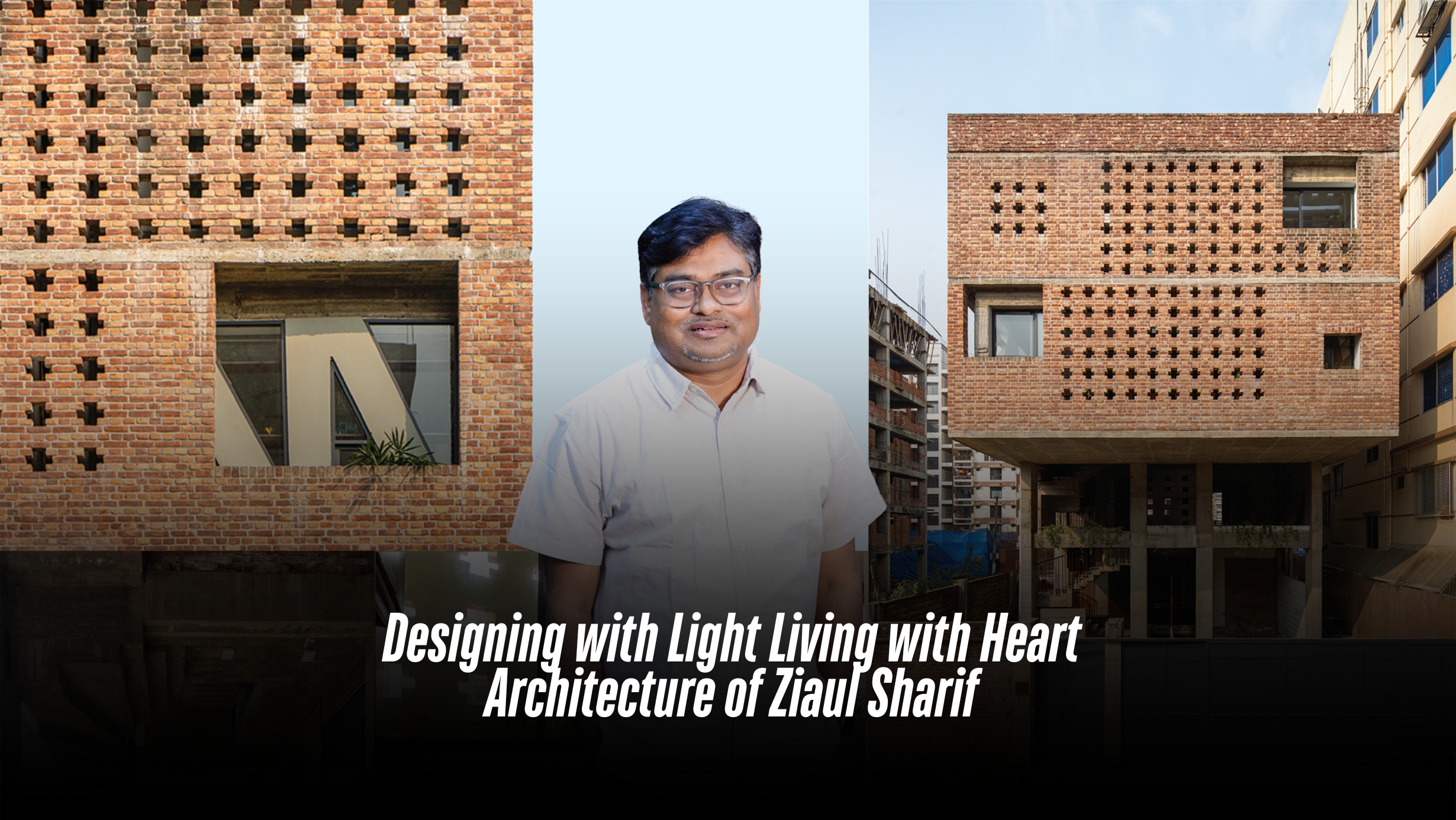
In the narrow lanes of early 1990s Dhaka, a young boy paused in front of construction sites and miniature models displayed on black-and-white television sets. These fragments of the city—raw, unfinished, full of potential—captured his imagination. For Ziaul Sharif, architecture began not in a classroom, but in the rhythm of passing buildings, the dance of light on brick, and a deep curiosity about how spaces are made.
Now the founder and principal architect of Vuu-Maatra Consultants, Ziaul Sharif is shaping a quietly radical vision for contemporary architecture in Bangladesh—one where light, air, greenery, and local wisdom are not design options, but essentials.
A Creative Foundation
Born in Rajshahi and raised in Dhaka, Ziaul Sharif grew up in a home where intellect and creativity were part of daily life. His father, MM Shahidullah, practised law with conviction; his mother, the late Mrs. Shireen Shahid, fostered a home filled with music, art, and community spirit. From teaching music to children at Ghashful Khelaghar Asor to painting and acting, Sharif’s early exposure to the arts enriched the spatial sensibility that now defines his work.
After completing his education at Rayer Bazar High School and Dhaka City College, Sharif pursued architecture at BUET, one of Bangladesh’s most respected institutions. There, he studied under the renowned Professor Shamsul Wares and found himself drawn to the work of Louis Kahn—especially the National Parliament Building, whose poetic use of space and light remains a lasting influence.
Design as Responsibility
Sharif’s early professional journey included stints with Bashirul Haque & Associates, Indigenous Architects, and Nandan Architects. In 2006, he took on the resident architect role for Westin Dhaka, a five-star hotel project that refined his understanding of scale and detail. But it was in 2008, with the founding of Vuu-Maatra Consultants, that his practice truly found its voice.
Today, the studio is home to 15 designers, architects, and engineers, and their portfolio spans from high-rise commercial buildings to hotel interiors and private residences. But what sets the firm apart isn’t the scale of its projects—it’s the intention behind them.

“We don’t just design buildings,” says Sharif. “We design environments for life. For growing up, resting, healing, thinking. For breathing.”
This approach is deeply humanistic, rooted in the belief that architecture has a profound impact on the mental and physical well-being of its occupants. In a city where poorly ventilated, densely packed housing is the norm, Architect Ziaul Sharif advocates for an alternative: buildings that breathe.
Vasat Vita: A Living Prototype
Nowhere is this philosophy more evident than in Vasat Vita, Architect Ziaul Sharif’s residence and studio in Dhaka’s Aftabnagar. Completed in 2022, this three-storey structure sits on a compact 200-square-metre plot but opens inward to an expansive experience of air, light, and greenery.
Built with passive cooling principles inspired by Vaastu Shastra, the building features a central courtyard open to the sky, a waterbody that moderates internal temperatures, and a layered brick façade that filters sunlight while ensuring privacy. A ribbon of plants tucked between the perforated brick shell and the glass wall brings nature directly into the building’s envelope.
“Vasat Vita is not just a home or an office,” Sharif explains. “It’s a lab for ideas. A demonstration of how we can live better, even in the tightest corners of Dhaka.”
The project was recently featured in ArchDaily, highlighting its relevance not just to local contexts but to global conversations about compact urban sustainability, thermal comfort, and culturally responsive design.
Architecture for People
Architect Ziaul Sharif’s commitment to accessible design extends beyond his client list. Through Vuu-Maatra, he has initiated a pro-bono programme to offer free architectural services to families who cannot afford professional help. Projects in Khulna and Kushtia, including a residence for Aarti Rani Mandal, are built on this ethos of design as dignity—ensuring that even modest homes receive the same care and thought as luxury hotels. This vision challenges the long-held assumption that architecture is a service for the elite.
“Everyone deserves a well-designed home,” Sharif insists. “Good architecture shouldn’t be a privilege. It’s a necessity.”
A Future Rooted in the Past
Sharif’s work draws as much from memory as it does from modern techniques. He recalls walking past old brick buildings in Old Dhaka, noticing how they aged gracefully, filtering air and light through intricate jaali patterns. These early experiences now manifest in his façades, his ventilation strategies, and his material choices.
In an era obsessed with glass towers and instant spectacle, Ziaul Sharif’s architecture is refreshingly quiet. It invites you to pause. To feel. To notice how the air moves, how shadows stretch, and how a space can hold you gently.
With every project, Sharif is not just building structures—he’s building the belief: that architecture can be beautiful, democratic, sustainable, and deeply personal.
Vuu-Maatra Consultants is currently expanding its portfolio across Bangladesh, continuing its mission of designing with empathy, responsibility, and rooted imagination.




